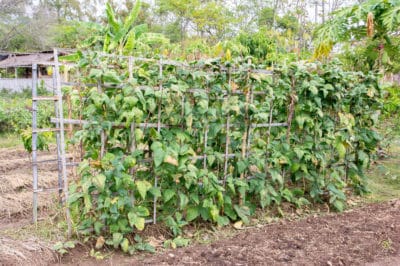How to Plant Lentils
Lentils come from the temperate climates around the Mediterranean and in Africa. They are suited to cooler, temperate regions but can also be grown through the winter in the subtropics. Lentils can handle a light frost, but not harsh heat.
Plant lentils directly into well-worked soil 2 weeks before the average last frost in your region. In temperate climates, this is typically in May. Lentil seeds germinate at an ideal temperature of 68°F (20°C). If the soil hasn’t warmed to this temperature, you can start them indoors and transplant them later.
There is no need to work nitrogen into the soil for lentils. These plants actually get their nitrogen from the air through a relationship with rhizobacteria. Over the course of their life, they will actually pump nitrogen-rich nodules into the soil which break down and feed other plants.
Lentil Plant Care
Lentils prefer a well-draining balanced soil pH around 7.0. They thrive in full sunlight but cannot tolerate harsh heat, and they may need shade during hot spells.
They need a small trellis to support their climbing growth. They can be spaced farther apart and allowed to cover the ground although the risk of fungal contamination, disease, and pest damage goes up if not on a trellis.
Maintain an even soil moisture content throughout the lifecycle of the plant. When the bean pods begin to brown and dry, stop watering.
Lentil Plant Companions
Lentils make excellent companions to heavy nitrogen using plants like cucumber and tomato. Farmers and gardeners will take advantage of the lentils ability to fix nitrogen by rotating it through their garden beds.
For example, a crop of lentils followed later by a crop of corn will give two harvests from the land and the lentils leave nitrogen nodules in the soil for the corn to gobble up. Some good companions for lentils include:
- Cucumbers
- Potatoes
- Tomatoes
- Summer Savory
Avoid planting lentils with these plants:
- Other Legumes
- Garlic
- Onions
Pests and Troubleshooting
Lentils are fairly tolerant of most conditions and easy to care for. They can become susceptible to rot and fungus in high humidity climates, so keeping them off the ground in the areas is important.












